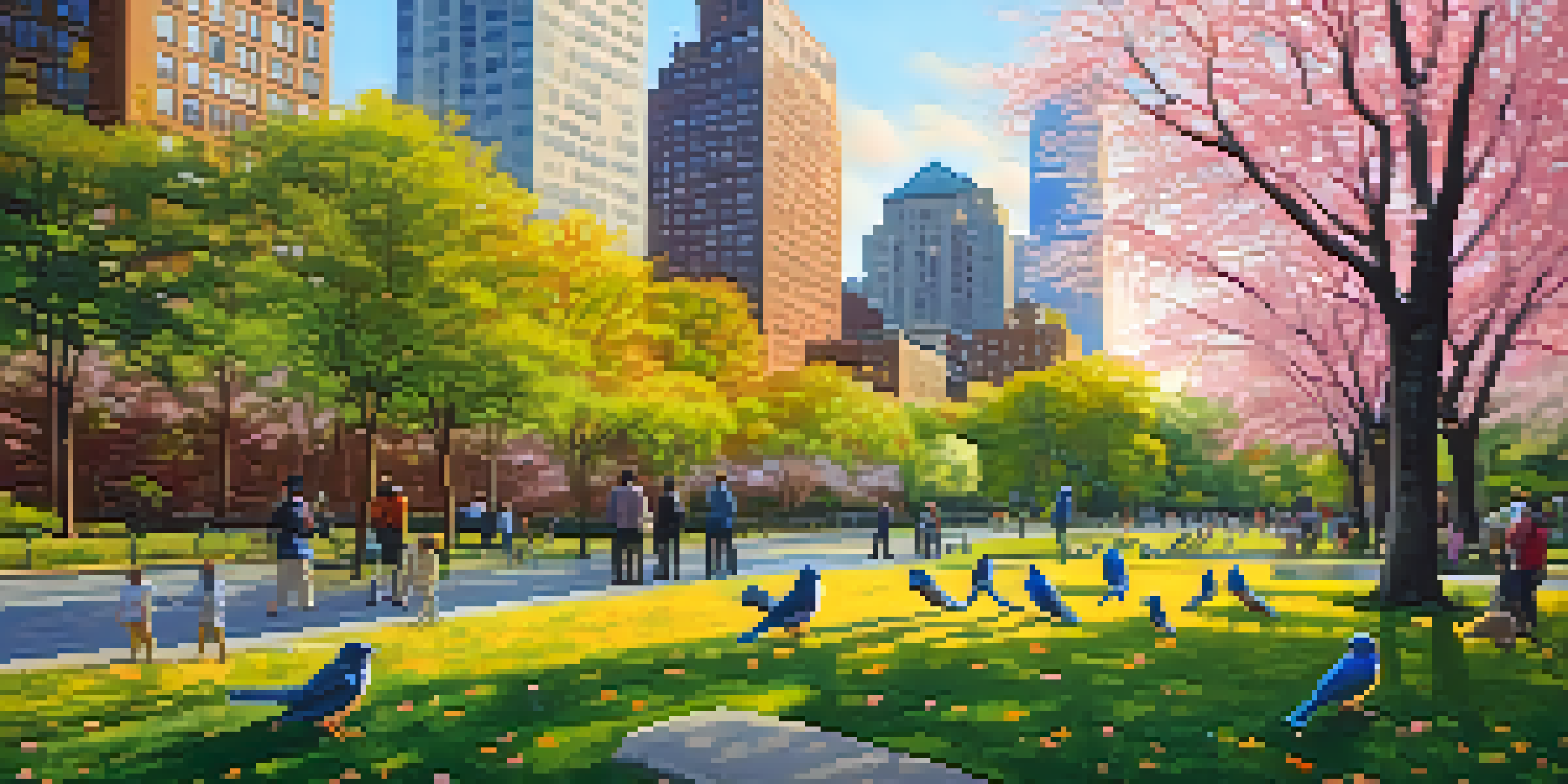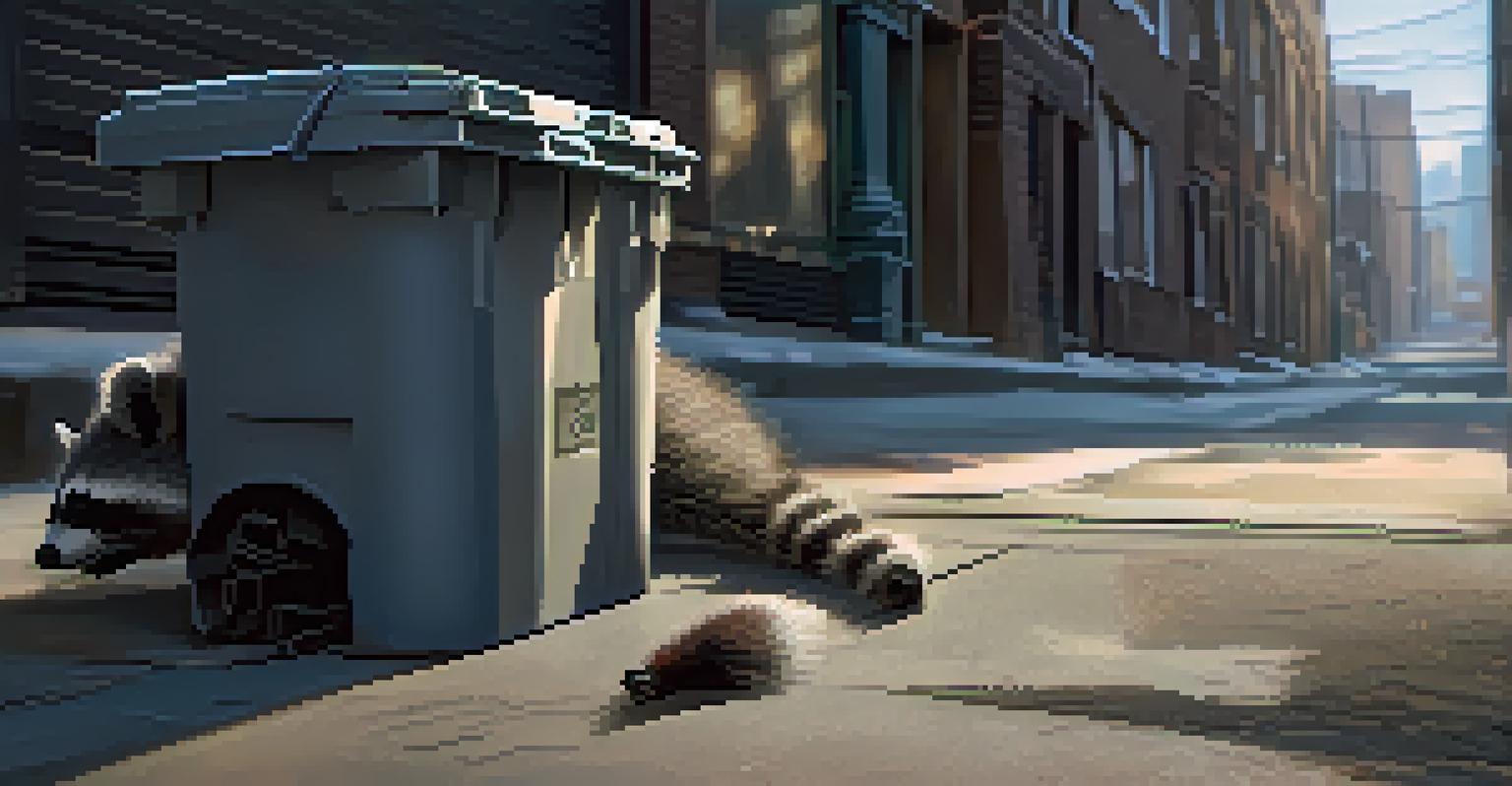The Impact of Urbanization on New York City Wildlife

Understanding Urbanization in New York City
Urbanization refers to the growing population and development in urban areas, particularly cities. In New York City, this has meant an explosion of buildings, infrastructure, and people. As the city expanded, natural habitats have been replaced by streets, skyscrapers, and parks, transforming the landscape significantly.
In the city, we need to balance the growth of urban landscapes with the preservation of nature. Wildlife and urban living can coexist, but it requires conscious effort and planning.
The rapid growth of NYC has led to a dense population and a bustling environment, making it one of the most iconic cities globally. However, this urban sprawl comes with challenges, particularly for the wildlife that once thrived in these areas. As humans move in, many species are pushed out, struggling to adapt to the changes in their environment.
By understanding urbanization, we can appreciate the complexities of living in a city where nature and development constantly intersect. This foundation helps us explore how the wildlife of New York City is coping with these transformations.
The Displacement of Native Species
As urban areas expand, many native species face displacement. Animals such as the Eastern Gray Squirrel and the Red-tailed Hawk have adapted to urban life, while others, like certain songbirds, find it harder to survive. This loss of natural habitats means that some species are driven out or even face extinction.

For example, the once-abundant Eastern Bluebird has seen a decline in its numbers due to urban development and habitat loss. These birds thrive in open fields and wooded areas, which are increasingly rare in a city packed with buildings. As their natural environments shrink, their ability to find food and nesting sites diminishes.
Urban Wildlife Faces Displacement
Urbanization in New York City has led to the displacement of native species, threatening their survival and biodiversity.
The plight of these native species highlights the impact of urbanization on biodiversity. It's a reminder that while cities can be vibrant ecosystems, they also pose significant challenges for wildlife trying to coexist with human development.
Adaptation of Wildlife to Urban Environments
While many species struggle, others have shown remarkable resilience and adaptability to urban settings. Animals like raccoons, pigeons, and coyotes have become increasingly common in cities. These species have learned to navigate human environments, finding food and shelter in ways that are often surprising.
The future will be about urban wildlife, and how we learn to coexist with it. Cities can either be barriers or pathways for biodiversity.
Take raccoons, for instance. Known for their dexterity and intelligence, they have become expert foragers in urban areas, rummaging through garbage bins and scavenging for food. Their adaptability showcases how some wildlife can thrive in cities, even as their natural habitats dwindle.
This adaptability raises interesting questions about urban ecology and the potential for cohabitation between humans and wildlife. It challenges us to rethink our relationship with nature and find ways to accommodate these resilient species within our urban landscapes.
Green Spaces and Their Role in Urban Wildlife
Green spaces, such as parks and gardens, play a crucial role in supporting urban wildlife. These areas provide essential habitats for various species, offering food, shelter, and breeding grounds. In a densely populated city like New York, parks serve as vital refuges for wildlife amidst the concrete jungle.
For instance, Central Park is not just a recreational area for people; it is also home to over 200 species of birds. During migration seasons, the park becomes a critical stopover for these birds, showcasing how green spaces can enhance urban biodiversity. Such areas allow wildlife to flourish, even in an urban environment.
Green Spaces Support Urban Wildlife
Parks and green areas in cities like New York provide essential habitats for various wildlife, helping to enhance urban biodiversity.
The presence of green spaces highlights the importance of preserving and expanding these areas. By recognizing their value, we can create a more harmonious coexistence between nature and urban living.
The Role of Urban Ecosystems in Biodiversity
Urban ecosystems are complex networks where wildlife and humans interact. These systems can contribute to biodiversity if managed effectively. For example, community gardens and urban farms can foster a variety of species, promoting a healthier ecosystem and enhancing food security.
Moreover, urban ecosystems can help mitigate climate change by improving air quality and reducing heat. Plants play a crucial role in this process, absorbing carbon dioxide and providing oxygen. By integrating nature into city planning, we can create spaces that benefit both wildlife and residents.
Recognizing the value of urban ecosystems is essential for fostering biodiversity. It encourages us to think creatively about how we can design cities that support both human and wildlife communities.
Challenges of Urban Wildlife Conservation
Conserving wildlife in urban settings presents unique challenges. Limited space, pollution, and human-wildlife conflicts can hinder conservation efforts. For instance, as more buildings rise, the chances of wildlife being harmed in traffic accidents or losing nesting sites increase significantly.
Additionally, urban areas often lack the necessary resources for effective wildlife management. Funding and support for conservation programs may not be prioritized, leaving many species vulnerable. This situation calls for a collective effort from local governments, organizations, and communities to address these issues.
Community Action Aids Conservation
Community involvement and education are crucial for fostering a sense of responsibility and encouraging active participation in urban wildlife conservation efforts.
Despite these challenges, there is hope for urban wildlife conservation. By raising awareness and promoting sustainable practices, we can work towards creating a city that nurtures its wildlife populations.
Community Involvement and Education
Community involvement is vital for successful wildlife conservation in urban areas. Educating residents about the importance of local wildlife fosters a sense of responsibility and encourages them to play an active role in conservation efforts. Simple actions, such as creating bird-friendly spaces or participating in clean-up events, can make a significant impact.
Moreover, educational programs can help demystify wildlife and dispel myths that often lead to fear or misunderstanding. By learning about local species and their roles in the ecosystem, residents can develop a deeper appreciation for the wildlife around them. This can lead to more proactive conservation efforts.

Involving the community in wildlife conservation not only benefits the environment but also strengthens social ties. It transforms individuals into stewards of their environment, fostering a shared commitment to preserving the rich biodiversity of New York City.